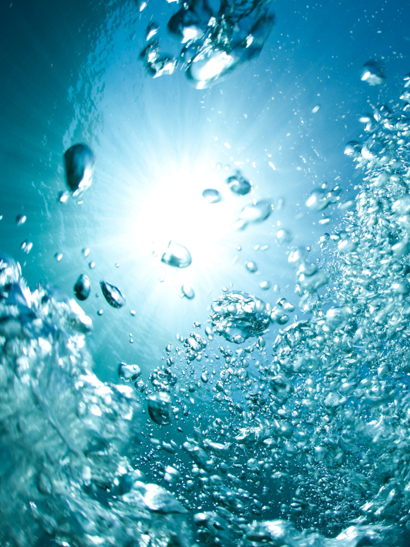In a multi-fuel landscape, as is predicted by 2050, flexibility will be key. Industries are eying alternative fuels and solutions to power their plants, whilst governments are focussed on sustainable energy security. Ammonia, nuclear and hydrogen, as well as LNG as a transitional form of power, are amongst the solutions that will all play a part in meeting the 2050 Paris Agreement of net zero GHG emissions by 2050.
As a carrier of nearly 90% of world trade, maritime is re-aligning its relationship with the energy industry as it seeks to capitalise on opportunities as they emerge.
One example is carbon capture, around which a supply chain is maturing as industries look to capture, safely store or potentially reuse the gas. Conventional fuels, LNG, LPG and grey ammonia release carbon when used and capturing this carbon supports their use as a low emissions form of energy as part of the future energy landscape. Carbon capture usage and storage (CCUS) is being increasingly considered as a promising technology to support the energy transition especially in hard-to-abate sectors.
Gas carrier owners, meanwhile, are eyeing opportunities to carry what are expected to be increasingly bountiful cargoes of LCO2, and orders are being placed.
Lloyd’s Register data reveals that there are currently eight LCO2 carriers on order but only five in service, one of which was launched last year. The most recent announcement was in June this year (2024) for a 40,000cbm low pressure ammonia-ready LCO2 carrier for Capital Gas Ship Management. This follows a further four orders of 22,000cbm vessels placed late 2023/ early 2024 also from Capital. All five vessels are LR classed.
With more LCO2 carrier-capable vessels orders expected, owners are considering whether to commit to cargo-specific tonnage or opt for higher specification multigas ships.
Both options have their merits, says Jack Spyros Pringle, a Lead Consultant in LR’s Business Advisory team. “By increasing the range of cargoes a vessel can carry, you are ultimately increasing the revenue earning potential of the vessel. You basically create the same multigas carrier, but use stronger steel so that it can carry a heavier cargo,” he said, noting that LCO2 is approximately 65% and 92% heavier than ammonia and LPG, respectively.
“It is certainly technically feasible,” he says, pointing to the four vessels on order for Capital, which can carry LPG and ammonia – as is usual for multipurpose gas ships – as well as LCO2. “If you increase the types of cargoes your vessel can carry you can potentially increase its utilisation by triangulating trade between LPG, ammonia and LCO2,” he says.
Commercial drivers
Whilst Pringle sees the commercial advantages of these types of ships, he says there are a number of key considerations that owners should bear in mind before they add LCO2 capability to their multigas newbuilds.
The first is the additional of cost, which Pringle estimates to be around 10-15% more due to the higher grade of steel required for the build. He also highlights that LPG and ammonia will likely operate on different trading routes to LCO2 carriers; “you may not be able to ballast far enough to load the next cargos from where you're discharging,” he explains, adding that fuel costs as the vessel sails in ballast to pick up the next cargo will increase due to the additional weight of the vessels as they contain heavier steel. “This aspect could also reduce the range of the vessel,” he notes.
“Also bear in mind the time and cost associated with tank cleaning. You can't mix ammonia and LCO2, so a full tank cleaning would be required in between unloading/loading these cargoes and that could take six to seven days plus.
“Consider that an average multi-purpose gas carrier carries out four tank cleanings per year, you could potentially increase the off hire period by one month simply through tank cleaning”.
That said, Pringle is confident that there will be a market for dedicated vessels that can transport LCO2. He has seen growing interest in smaller vessels of around 22,000 cmb, as shipowners recognise that the value chain is very nascent and smaller vessels come with reduced risk and greater flexibility. “There's so much uncertainty around how much cargo will actually be transported, where from and to where. So having a smaller vessel is a less risky option. It has a lower CAPEX and OPEX and also can also access a wider range terminals. Importantly, smaller LCO2 carriers will be able to tap into the CO2 value chain and operate on dedicated LCO2 trades linked to specific emitters, CO2 users and/or storage hubs”.

“Although some multigas carriers will have LCO₂ specifications, owners should not presume to pick up this cargo on the spot market. It may be that these vessels duck in and out of the trade”

Different markets
So new is the LCO2 supply chain that as yet it’s not known whether it will operate as a spot or liner trade. It’s a point Pringle is keen to impress. “Although some multigas carriers will have LCO2 specifications, owners should not presume to pick up this cargo on the spot market. It may be that these vessels duck in and out of the trade,” he says, “but it is more likely that most vessels moving LCO2 will be connected to storage projects, rather than a purely speculative play.”
Most big energy companies are incorporating CCS projects into their decarbonisation plans, says Pringle, and will be looking now at the shipping value chain. “Everything suggests the cargoes will be there to support today’s LCO2’s investment decisions, but what the value chain will look like in detail remains to be seen.
“Vessels that can carry LCO2 when the landscape takes shape will be at an advantage. You can’t retrofit to carry this cargo and so if you want to be in it, you have to commit And potentially the least risk play is to move towards smaller dedicated LCO2 assets in the early days of the market”







